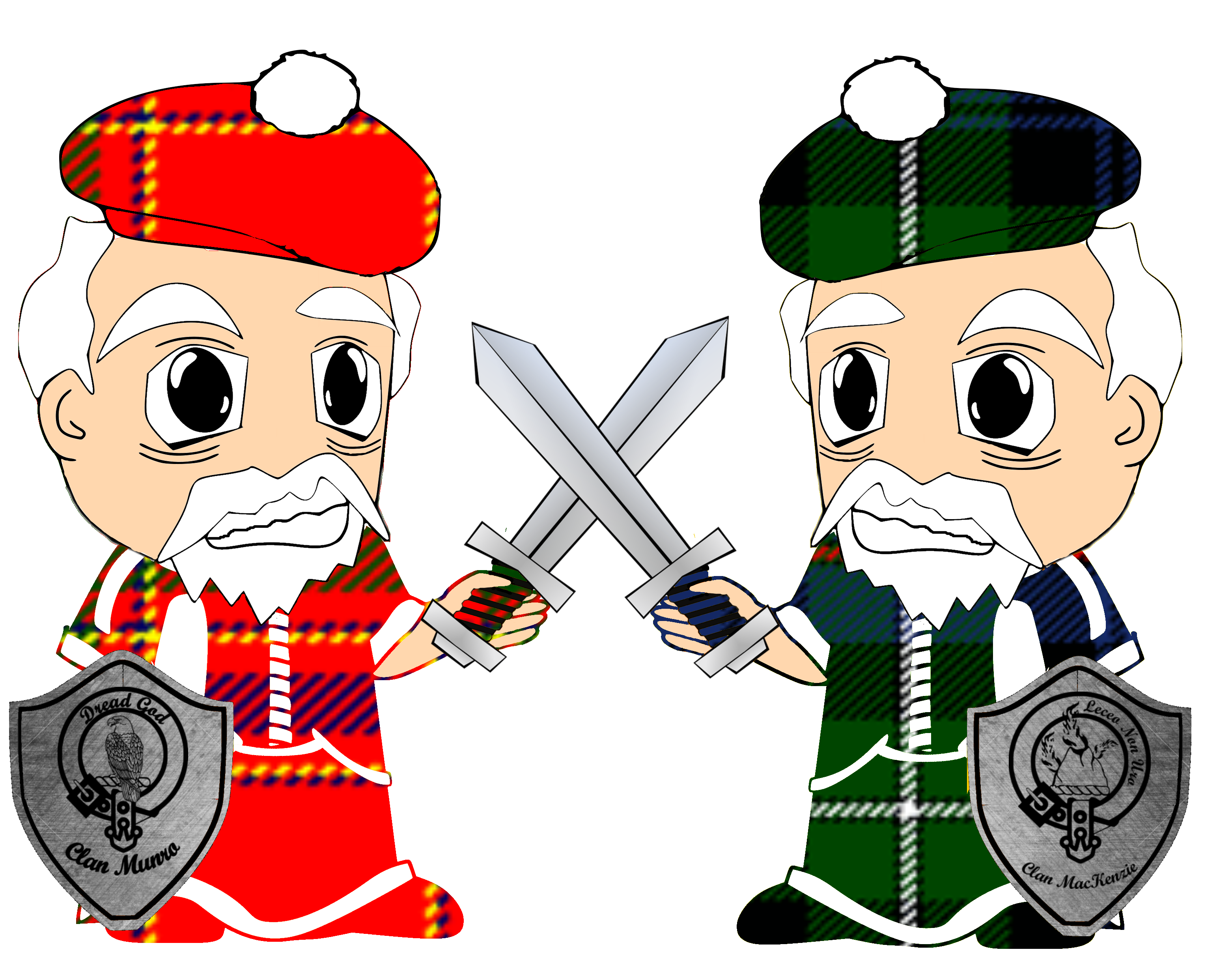Munro vs. MacKenzie
 In 1501 William Munro of Foulis was knighted by James IV of Scotland and began to assist the king in public affairs in the Scottish Highlands. It is believed that William Munro was instructed to lead a force against Clan Mackenzie as part of his official duties. The Mackenzie chief, Hector Roy Mackenzie was considered obnoxious to the government and a “disturber of the public peace”, this may have been the motivation for the ordered attack. Along with members of Clan Munro, William gathered a force of up to 900 men, this also included members of the Dingwall Clan and the MacCulloch Clan. This force attacked the Mackenzie’s, destroyed their property and seized a large number of their cattle.
In 1501 William Munro of Foulis was knighted by James IV of Scotland and began to assist the king in public affairs in the Scottish Highlands. It is believed that William Munro was instructed to lead a force against Clan Mackenzie as part of his official duties. The Mackenzie chief, Hector Roy Mackenzie was considered obnoxious to the government and a “disturber of the public peace”, this may have been the motivation for the ordered attack. Along with members of Clan Munro, William gathered a force of up to 900 men, this also included members of the Dingwall Clan and the MacCulloch Clan. This force attacked the Mackenzie’s, destroyed their property and seized a large number of their cattle.
Hector Roy quickly gather as many clansman as he could on short notice, and headed out to seek revenge on the Munro’s. The Mackenzie’s were able to gather somewhere in the range of 180 men. Hector realized that his clan would be at a great disadvantage in numbers if they met the Munro’s head on, so he made plans to ambush them as they returned back to their own lands. The Mackenzie’s laid in wait for the Munro’s at Knockfarrel hill near the eastern extension of the Drumchatt Ridge. They were able to take them by surprise as they passed by on the South-side. The Mackenzie’s attacked with two-handed swords and battle axes. The Munro’s who were tired and weary from their hike back from Mackenzie territory panicked and began to scatter. William Munro, riding at the front of his line tried to turn and calm his troops but the men from the back rushed forward and confused the front of William’s charge. One legend states that the Mackenzie’s, during the rout of the Munro’s, cut off so many heads during the battle that they rolled down the hill and filled up a well at the bottom. The Well became known as “Tober ni Kean” in Gaelic which translates into “Fountain of Heads”. Even the local sheriff, Alexander Vass of Lochslin was said to be among those killed in the ambush. Almost all of the fighting men of Clan Dingwall and Clan MacCulloch were wiped out, and the Munro Clansmen were greatly reduced in numbers.
William Munro didn’t live long enough to get revenge on the Mackenzie’s for the massacre of his clan. A few years after the battle, while on the “King’s business”, he was commanded to proceed to Lochaber and was subsequently killed in a battle against the Cameron’s of Lochiel. Accounts of the battle stated that William was surrounded by the Cameron’s clansmen but refused to surrender, eventually he was slain by the sword of the Cameron’s chief.
The clan feud between the Mackenzies and Munro’s was peacefully settled a short time after the death of William, when his son Hector Munro, 13th Baron of Foulis, married the daughter of Kenneth Mackenzie, 7th of Kintail, chief of Clan Mackenzie. This marriage was used as an act of reconciliation between the two Scottish Clans.